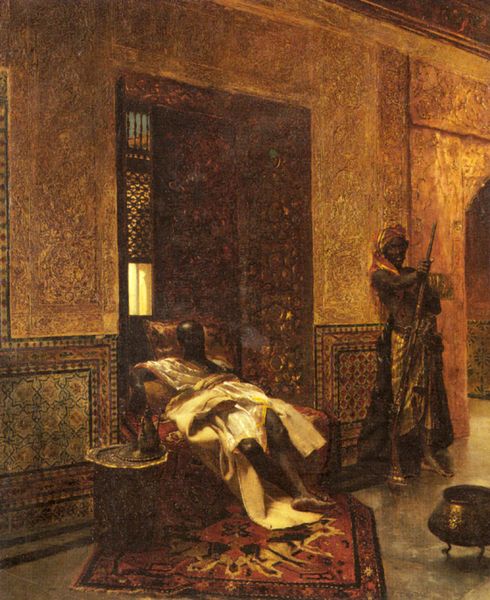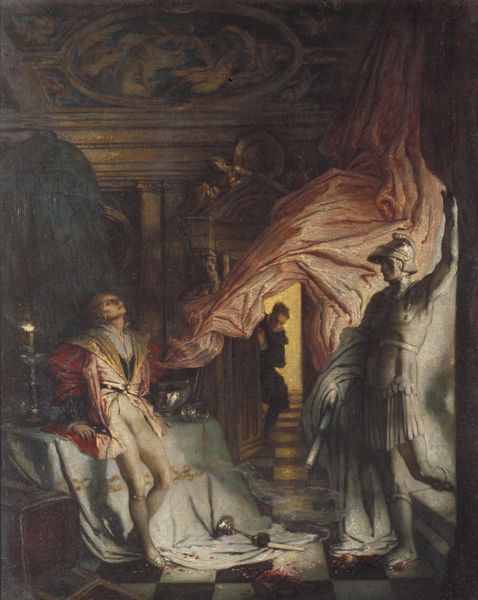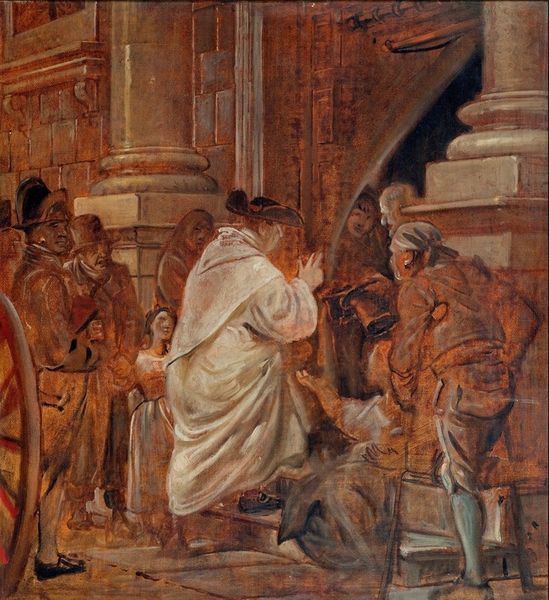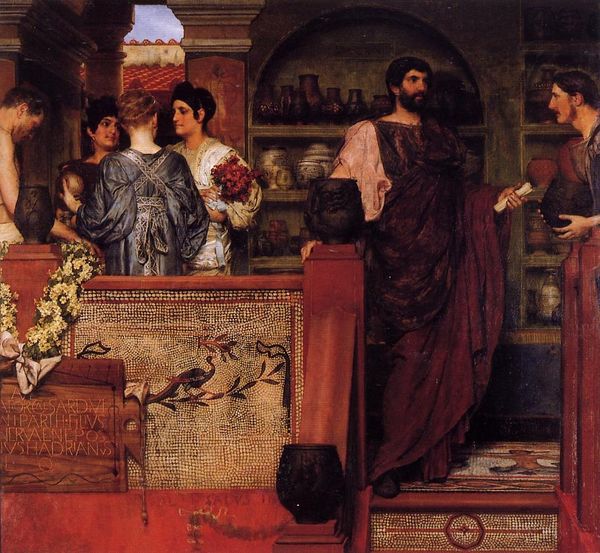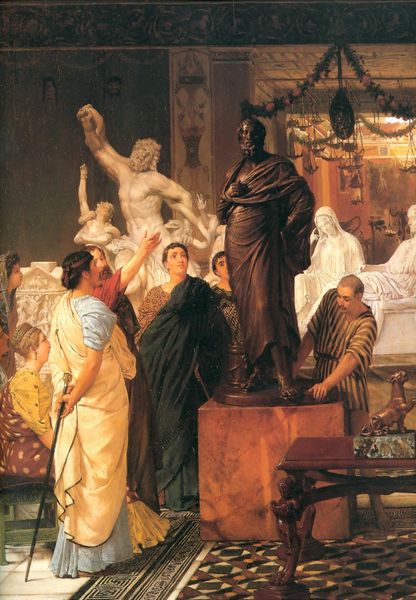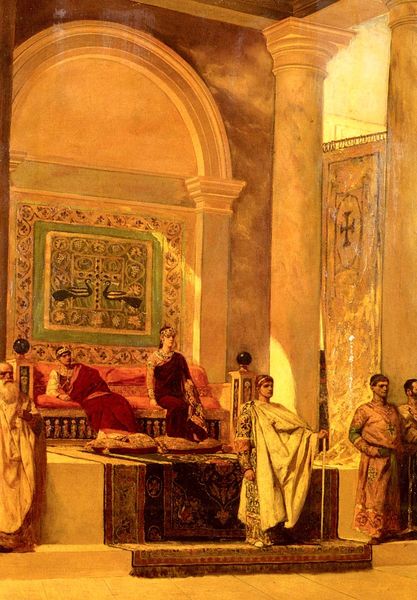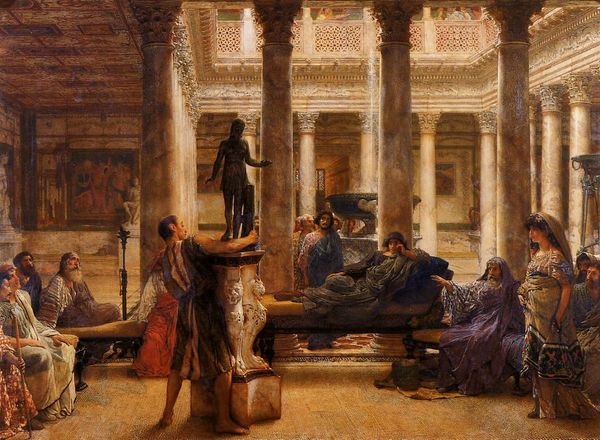
painting, oil-paint
#
painting
#
oil-paint
#
sculpture
#
greek-and-roman-art
#
landscape
#
figuration
#
historical fashion
#
ancient-mediterranean
#
mythology
#
history-painting
#
academic-art
#
realism
Copyright: Public Domain: Artvee
Curator: Painted by Lawrence Alma-Tadema between 1868 and 1869, this oil painting is titled "Pheidias And The Frieze Of The Parthenon." It gives us a peek behind the scenes of artistic creation in ancient Greece. Editor: The light is extraordinary; almost photographic in its detail. Yet it feels curiously staged, a scene viewed from a respectful distance. The frieze itself appears quite dynamic, a stark contrast to the muted tones and studied poses of the figures. Curator: Alma-Tadema, with his deep fascination for classical antiquity, reconstructs not just a physical space but a moment in cultural history. Notice how he places Pheidias, the master sculptor, amongst onlookers, almost as a point of central regard and focus for the whole process. What might he symbolize here? Editor: Perhaps he stands for the heroic individual genius celebrated in art history. The frieze, crowded with figures in mid-motion, embodies communal storytelling through a symbolic narrative. But consider Alma-Tadema's choices: staging the creative act as a public spectacle, watched and approved. It begs the question, who are we meant to identify with, the detached onlookers or the laborers who execute the sculpture? Curator: It's tempting to view these onlookers through a lens of modern artistic practice, as patrons who had to be impressed. But I think they have deeper resonance: figures deeply immersed in mythology and Athenian ideals. They are participating in myth-making, too, if even passively. The symbols speak directly to them, reinforcing social order, history, and continuity. It’s a reflection of their own ideals and heritage in material form. Editor: Yes, and how powerful is the subtle staging, even down to the raised platforms that highlight this scene in process. Yet that choice makes us question: what's not included in this snapshot of cultural life? I am always curious about who funded projects, and how those interests impacted its style, content, and reception by the public at large. Curator: Absolutely; artistic creation never happens in a vacuum, as Alma-Tadema’s art reminds us. Editor: It’s fascinating to reflect on how this painting prompts discussion of a cultural legacy so profound and distant. Curator: A legacy that still resonates in artistic representations today.
Comments
No comments
Be the first to comment and join the conversation on the ultimate creative platform.


